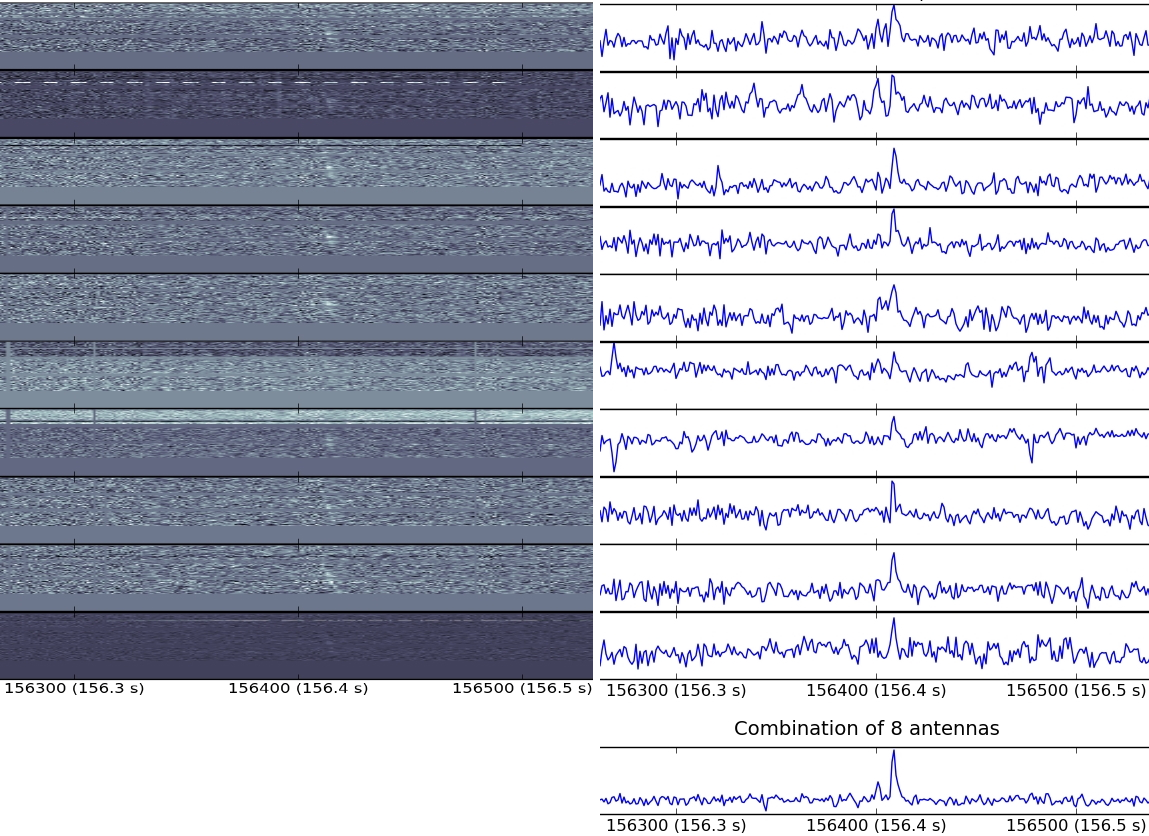Daily Image
01-09-2011Detecting fast radio transients with the VLBA
| Submitter: | Adam Deller |
| Description: | Fast (< 1 second) radio transients are difficult to identify and characterise - radio frequency interference (RFI) is an all-too-common impostor, especially at the low frequencies now being probed by instruments such as LOFAR, ASKAP, MeerKAT and Apertif. A crucial advantage of new systems over previous single-dish surveys is the presence of multiple, geographically separated detectors, which provides robustness against local RFI. Maximising the effectiveness of multi-element detectors, however, is still a relatively young field undergoing rapid development. A pilot survey aiming to address these questions is the V-FASTR project on the Very Long Baseline Array ( https://safe.nrao.edu/vlba/vfastr ). By searching all VLBA data at millisecond time resolution in "piggy-back" fashion as it passes through the DiFX software correlator, V-FASTR can rapidly accumulate a large amount of survey time. This image shows the detection of a pulse from PSR J2326+6113 during a recent VLBA observation. This event was particularly interesting as the peak flux density is approximately 20 times greater than normal for this pulsar - an average pulse falls far below the detection threshold. The left panel shows the dynamic spectrum of all 10 VLBA antennas (64 MHz of bandwidth centred at 1650 MHz) while the right panel shows the dedispersed time series (using the best-fit dispersion measure) for the individual antennas and an 8 antenna sum. Some array-wide satellite RFI has been automatically identified and removed from the dynamic spectra, and an adaptive algorithm (trained by retrieving synthetic pulses injected into a parallel dataset) identifies an optimal sum of antennas. In this way, the effects of the remaining (local) RFI can be mitigated, and a range of trial dispersion measures searched. More details about the V-FASTR project and the algorithms employed can be found in Wayth et al., 2011, ApJ, 735, 97 and Thompson et al., 2011, ApJ, 735, 98. V-FASTR is a pathfinder for the CRAFT fast transients project on ASKAP. |
| Copyright: | The V-FASTR collaboration |
| Tweet |  |
